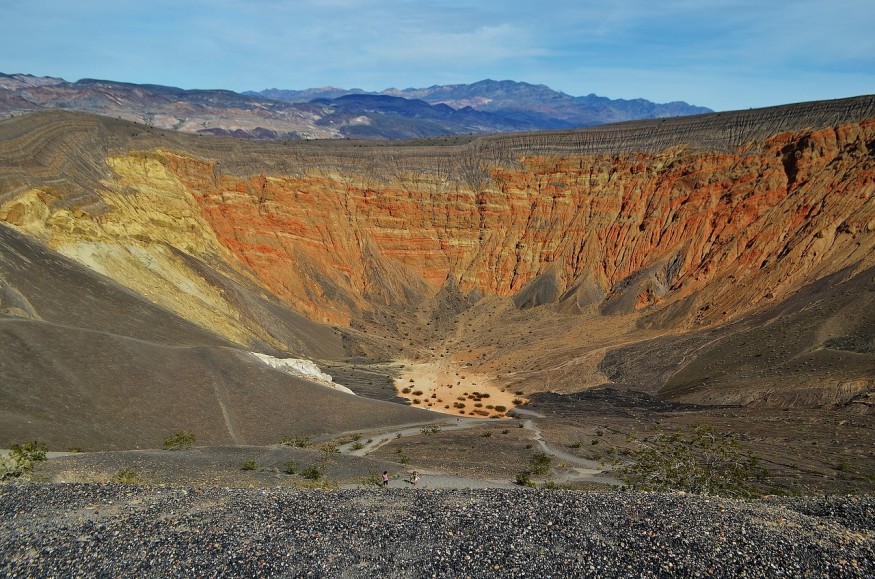Phreatomagmatic eruptions like the one that occurred at Mount Vesuvius, which caused many fatalities and buried the ancient Roman city of Pompeii near what is now in Naples, Italy, around 79 C.E., can also occur at the Ubehebe Crater in Death Valley, California.
This is according to a new study, which said the scientists underestimate the surge runout distance following a volcanic eruption of such type.
The study was led by scientists from the United States and New Zealand, suggesting that pyroclastic surge runout to be up to 10 to 15 kilometers instead of only a maximum of six kilometers.
This comes after the authors of the new research found that surge deposits from Ubehebe Crater extended to nine kilometers.
The research noted this could not be unusual due to the low temperatures of such surges.
Surge Runout Distance

Findings about the explosive eruption linking Mount Vesuvius with the Ubehebe Crater were published in the journal Geophysical Research Letters on October 21.
Researchers from the University at Buffalo, U.S. Geological Survey (USGS), and University of Otago found that the said eruption distance from previous assessments could go farther than the existing evidence.
In particular, the research team is critical to current hazard assessments in monogenetic volcanic fields where it considers the said runout distance of up to six kilometers only based on preserved deposits from previous volcanic eruptions.
The October study serve not only as an update to an existing body of knowledge concerning phreatomagmatic eruptions and magma bubbles but also an accurate measurement oh how far a lava or magma could go following an explosion eruption.
What are Phreatomagmatic Eruptions?
Phreatomagmatic eruptions are a type of explosive eruptions that involves both magma and water, leading to concurrent emission of steam and pyroclastic fragments, according to the USGS.
In previous research, scientists determined that phreatic explosions can contain carbon dioxide or hydrogen sulfide.
In 1979, a phreatic volcanic eruption occurred in Indonesia's main island of Java, killing 140 people who were exposed to poisonous gases.
Unlike magmatic eruptions, phreatomagmatic eruptions can reportedly reach farther distance since its material is relatively softer due to the influence of water, in addition to the mentioned low temperatures earlier.
Ubehebe Crater
The Ubehebe Crater is a large volcanic crater and is only one of around dozen craters in the Ubehebe volcanic field, located in the northern half of Death Valley.
The Ubehebe craters are considered to be an isolated group of maar volcanoes, which erupt through non-volcanic sediments of the Death Valley National Park, according to the Global Volcanism Program of the Smithsonian Institution.
In line with the study, the researchers also asserted the evidence of the surge runout distance from the Ubehebe Crater came from phreatomagmatic eruptions around 2,100 years ago.
With this, they found the pyroclastic surge deposits extended farther than the conventional reach of a magma from the crater, as summarized by Phys.org.
© 2025 NatureWorldNews.com All rights reserved. Do not reproduce without permission.





